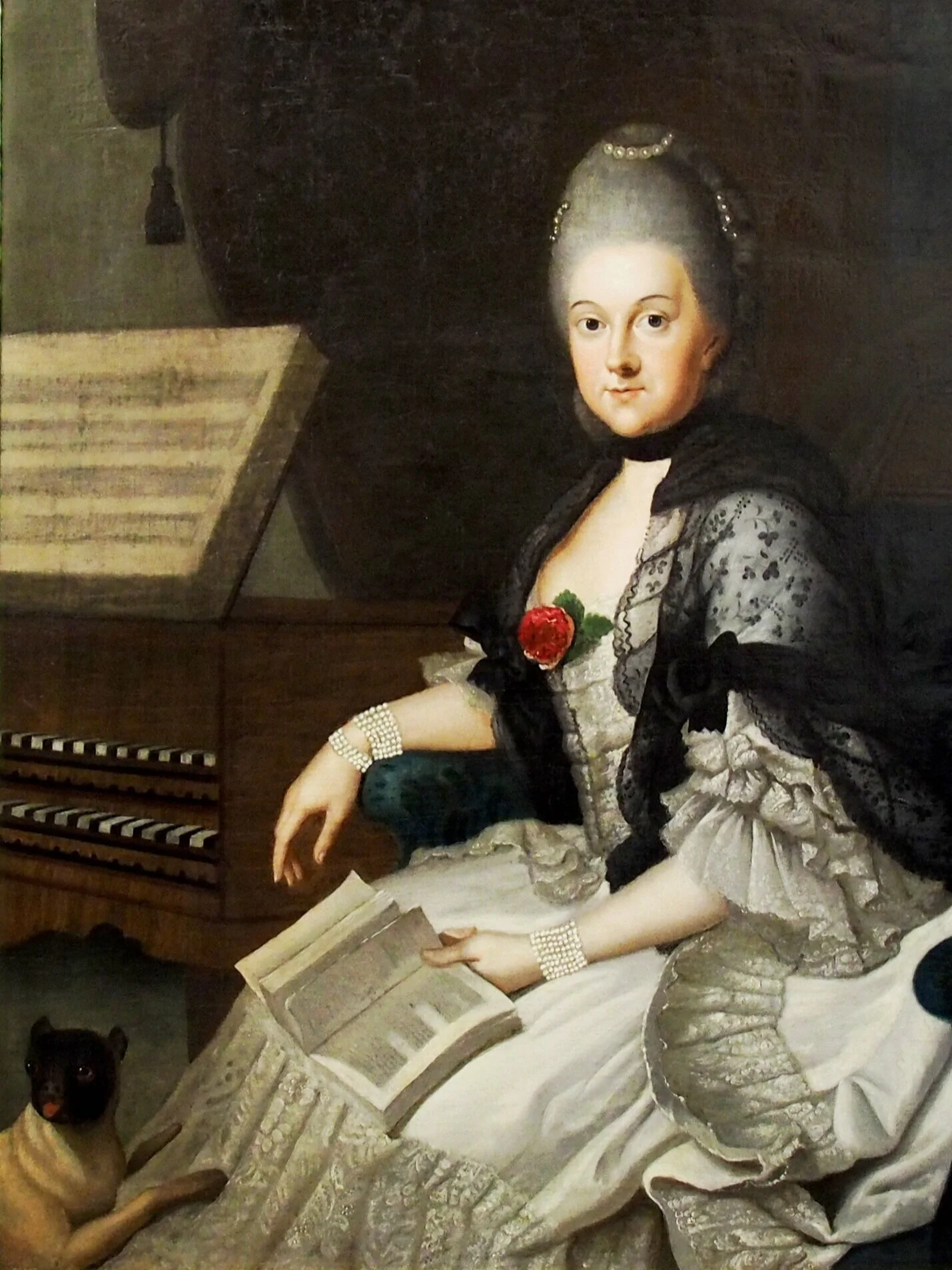10 Female Composers You Should Know
In honor of Women’s History Month, we have gathered together our top 10 women composers who have made significant contributions to the world of classical music.
Here is our guide to the lives of ten brilliant female composers from the last 1000 years.
1. Clara Schumann
(1819-1896)
“Clara Schumann has composed a series of small pieces, which show a musical and tender ingenuity such as she has never attained before. But to have children, and a husband who is always living in the realm of imagination, does not go together with composing.” So wrote Robert Schumann, the man who both inspired and hampered his pianist-wife’s creative career, as did her ultimate need to support six children. She composed her own virtuoso piano music from a young age, including her Variations on a theme by Bellini and bravura Piano Concerto in A minor, written at just 16. Her later, sombre, unfinished Konzertsatz in F minor and Variations on a Theme by Robert Schumann Op. 20 reveal the blossoming of an individual voice, as does the graceful, rigorous G minor Piano Trio Op. 17, and quietly desperate Romances Op. 21/22. A towering musician, her influence on the repertoire, on the recital format and on an approach to the piano that favoured searching musicianship over display are as important legacies as her music.
When Clara Schumann wrote, “A woman must not desire to compose – not one has been able to do it, and why should I expect to?,” she could not have possibly have known about her illustrious predecessors, who include the 12th-century abbess Hildegard of Bingen, Francesca Caccini, jewel of the Medicis, or Elisabeth Jacquet de La Guerre, France’s first female opera composer. Without even knowing it, Clara Schumann has become an inspiration to many women throughout the world and has motivated female musicians to push through the sad reality of unequal pedestals between male and female composers.
2. Hildegard of Bingen
(1098-1179)
Abbess, visionary, leader, poet, dramatist, herbalist and composer, Hildegard of Bingen stands out in music history as an artist in control of her context. Her musical legacy, of nearly 80 surviving works including a morality drama Ordo Virtutum, is one of the largest of any Medieval composer. She wrote for her own convents and nearby monasteries, supervising the copying of manuscripts. Immersed in her youth in the eight sung offices of the day, she seems to have learnt the skills of composing via osmosis: “I composed and chanted plainsong in praise of God and the saints, even though I had never studied either musical notation or singing.” Her collection of pieces following the liturgical forms of antiphons, responsories, sequences and hymns is entitled Symphony of the Harmony of Heavenly Revelations. Her musical style is characterized by great boldness, as ecstatic melodies vault upwards in wide intervals of fourths and fifths, and a dramatic use of flowing lines, with soaring arches encompassing more than an octave.
3. Francesca Caccini
(1587-after 1641)
Francesca Caccini’s works are often assumed to be by her father, Giulio. In fact, her songs have endured and can be found in many recorded collections of Italian Baroque. Known as “La Cecchina,” this composer, singer, lutenist, poet and teacher is thought to be the first Italian woman to have an “opera” successfully staged: the comedy-ballet La liberazione di Ruggiero, published in 1625. Born into the Medici court where her father worked, Francesca received a humanist education and music training. She sang at the wedding of Henry IV of France to Maria de’ Medici and so impressed him, he requested she stay. But she returned to Florence where her carnival entertainment La Stiava led to her first position at court. She composed 32 songs, and at least 16 stage works to dramas by Michelangelo Buonarroti (the younger) and provided music for court and liturgical settings. At her career’s height in the 1620s, she was the highest paid musician in the court.
4. Barbara Strozzi
(1619-1677)
One of 17th-century Venice’s most famous singers, Barbara Strozzi was also the composer of eight volumes of dramatic vocal music. Being the illegitimate daughter of a servant and Giulio Strozzi, the enlightened dramatist and librettist, she became his “elected” daughter, and pupil. He encouraged both her performing and composing, setting up his Accademia degli Unisoni as a platform for her. Her first book of songs, settings of her father’s lyrics, was presented to the Grand Duchess of Tuscany in 1644, with a dedication which hinted at the pressures she was under: “I hope it may find protection… from the bolts of slander already preparing for it.” After her father’s death, she relied on composition for her livelihood. Chromatic tensions, expressive lines, and long virtuoso runs mark her style, whose flamboyance hints at her own vocal powers.
5. Elisabeth Jacquet de La Guerre
(1665-1729)
Elisabeth Jacquet de La Guerre, known to be a musical prodigy at a young age, played for Louis XIV at the age of five, and was taken under the wing of Madame de Montespan until she married the organist Marin de La Guerre, which enabled her to pursue her music career. The contemporary chronicler Evrard Titon du Tillet declared that, “Sometimes she improvises one or another for a whole half hour with tunes and harmonies of great variety and has quite the best possible taste, charming her listeners.” Her name appears in one of the first published collections of harpsichord music, dating from 1687. She also wrote secular Cantates françoises and also the first opera by a woman to be staged in France, Céphale et Procris in 1694.
6. Duchess Anna Amalia of Brunswick-Wolfenbüttel
(1739-1807)
There were plenty of female virtuosos and composers during the 18th century, but their lives were more restricted than before. Anna Amalia had the advantages of nobility and influence: born a princess (her grandfather being Frederick William I of Prussia), she became the Duchess of Saxe-Weimar-Eisenach, transforming her court into one of the most influential cultural centres in Germany. Her husband, the Duke, survived only two years after their marriage, after which she took charge of her court, attracting visiting writers and dramatists such as Goethe and Schiller. Among her surviving compositions are a symphony for two oboes, flutes, violins and double bass (1765), an oratorio, an opera Erwin und Elmire (1776) on a text by Goethe, and a Divertimento for piano, clarinet, viola and cello. The only available recordings feature her Flute Sonata and the overture and the entr’acte of her opera, which reveals a composer of zest, style and refinement.
7. Louise Farrenc
(1804-1875)
The 18 available recordings devoted to Louise Farrenc’s music are testament to the quality of her art. She’s without doubt France’s first lady composer of the 19th century, and also influential as performer and professor at the Paris Conservatoire. Born into a family of sculptors, she studied piano with Moscheles and Hummel and composition with Anton Reicha before embarking on a professional career in both performing and composing. Her marriage to flautist Aristide Farrenc opened many doors: they shared an interest in “early” music scholarship, and he founded Editions Farrenc, resulting in the publication of her works. Among her most popular pieces are two piano quintets, the beguiling and original Piano Trio with clarinet and flute, the Wind Sextet and the ambitious Nonet. She also wrote several symphonies, the Third praised by a critic as a “strong and spirited work.”
8. Fanny Mendelssohn
(1805-1847)
One has only to hear Fanny Mendelssohn’s String Quartet to know how fiery a talent was lost through her early death. She and her famous brother Felix studied composition with Carl Friedrich Zelter who wrote to Goethe that Fanny ‘could give you something of Sebastian Bach. This child is really something special.’ Her own father was tolerant rather than supportive, while Felix, while respecting her talent, clearly felt ‘she is too much all that a woman ought to be for this’. Queen Victoria herself made the gaffe of ascribing her ‘favourite’ Mendelssohn song, ‘Italien’, to Felix, only to discover it was by his sister. Fanny penned 460 pieces, including the Piano Trio in D, Quartet in E flat, a Piano Sonata in G minor, exquisite songs and the piano cycle Das Jahr. She suffered her fatal stroke while conducting one of Felix’s oratorios.
9. Ethel Smyth
(1858-1944)
A brave suffragette and a skilled composer, Dame Ethel Smyth refused to remain trapped by Victorian conventions. Cheerfully independent, she defied her father by studying composition at the Leipzig Conservatory; however, disappointed by the standards, she moved on to study privately with Heinrich von Herzogenberg, who introduced her to Brahms and Clara Schumann. Not for her the salon world of “feminine” songs and piano miniatures. From the start, she was composing in ambitious, large-scale forms, including the Double Concerto for horn and violin, the Mass in D and six operas. Der Wald was staged at New York’s Metropolitan Opera in 1903, while her comic opera The Boatswain’s Mate drew contemporary praise for its delightful, conversational style. Conductor Sir Thomas Beecham organized a festival in her honor in 1934 and Proms founder Sir Henry Wood was an admirer: there were 28 performances of her works at the Proms between 1913 and 1947. Her 1906 opera The Wreckers finally received its premiere at the Proms in 1994.
10. Ruth Crawford Seeger
(1901-1953)
Ruth Crawford Seeger is a key figure in this list – not for the size of her output, but its radical originality. Here was a woman who could “sling dissonances like a man.” In March 1930, she was the first woman to win a Guggenheim Fellowship to travel to Europe. In Berlin, she composed the visionary and wordless Three Chants, followed by her most famous work, the String Quartet (1931), an astonishingly original and coherent masterpiece which continues to influence composers today. In her works of this period, one senses a mind interrogating the essential construction of music with a forensic focus and wild freedom. After her marriage to the academic Charles Seeger, she diverted her musical talent into the painstaking work of collecting American folk song for the Library of Congress, a project to which she was zealously devoted, and which led to her seminal 1948 collection American Folk Songs for Children. She only returned to serious composition with the Suite for Wind Quintet in 1952, just before she developed terminal cancer.










